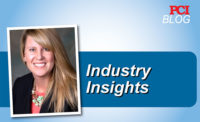How to Choose the Ideal Oven Temperature Logger

Vendors regularly speak with customers to address the key question, “Which of your products is best for my oven temperature application?” Whether you are an engineer planning for your next furnace temperature profiling project or a paint shop filling a requisition intended for paint testing as part of quality assurance, the number of available options when choosing your oven temperature data logger can initially overwhelm you. Taking the wide product diversity on the market into account, making a call to an experienced solutions provider is the surest way to get the information you need to make an informed decision. The majority of calls get customers started with this simple response: “Sure, what are you looking to accomplish?”
So What is Thermal Profiling?
Thermal profiling is the measurement of the temperatures throughout the cavity of an oven. Essentially, there are two types of oven temperature profiling; through process profiling, and stationary or batch oven profiling. Through process profiling relates to tunnel or conveyor ovens, while a batch oven is manually loaded and inloaded. A batch oven typically uses a fixed data logger external to the oven, while the converyor-based oven requires a data logger that can move with the conveyor through the oven; often through multiple zones. Through process oven profiling is used to validate that the parts moving through the cure cycle are experiencing the time at specified temperatures throughout the process as opposed to relying on the controller reported temperature. This requires a high-temperature data logger as well as a protective thermal barrier enclosure to further insulate the electronic logger form the high oven temperatures.
What Temperature Profiling System is Right for Me?
When deciding on an oven temperature data logger, it helps to first consider not only your immediate but also your future requirements. First and foremost, how many temperature inputs does your application need, and how many can you foresee wanting in the future? Since data loggers are available in many different configurations and models, knowing what you need now and possibly in the future will have a significant impact on your choice. Will you need to measure air and surface temperatures of your parts? What range of thermocouples do you need to work with – commonly-used types include J, K and T. Does the logger’s enclosure need a phase change insert for extended operation in the oven temperatures? How user-friendly is the software, and does it offer percentage cured calculations? Will you need additional software features such as data analysis and report printout?
Generally, an experienced provider will ask specific questions to help you determine which data loggers are the most suitable for your individual application, including how many inputs are required and what type of thermocouple is best; how much data needs to stored; temperature limits of the enclosure; necessary software features such as analysis and curing calculations; and any other requirements the application might have. This initial exploratory phase is the best time to engage a representative in a question and answer session with a quick phone call or online chat.
Example of an Oven Temperature Profiling Kit
As an example of a complete temperature profiling kit, CAS DataLoggers offers Grant Instruments’ latest version of the popular OMK610 data logger with many new features to assist in production quality control and to cut operating costs. The logger’s enhanced thermal barrier gives it maximum protection, available with an optional heat-absorbing insert. The kit meets paint manufacturers’ specified cure parameters by maintaining a specified level of cure, ensuring repeatable quality, maximizing oven usage and throughput, and optimizing oven running (energy) costs. Additionally, the logger archives data and results as part of any quality control system or supplier audit trail, and line operators can use it without the need for a PC.
Equally deserving of consideration is the software your logger uses - most importantly its ease of use, features and cost. Grant’s easily programmable Paintview set-up and data analysis software offers % cure calculation, data storage, report generation and analysis. PaintView also gives users a choice between using a ‘classic’ or ‘universal’ area integration cure analysis method. Users simply set paint type and pick their cure method to get start logging. Also, unlike many competing software platforms, PaintView has no extra cost per installation.
You’ll want to closely examine just what’s included with any temperature logging kit you’re considering. Grant’s complete OMK610 logger kit has the six-channel OQ610 temperature data logger for use with a wide range of Type-K or T thermocouple probes, an enhanced thermal barrier, USB communication cable, PaintView data storage and analysis software, a quick start guide to get you started logging quickly, and a set of batteries - all in a convenient carrying case. Additionally, a thermal insert sleeve to extend the operating temperature range is also available, as well as your choice of fast response, high accuracy probes with models for air and surface temperature.
Given the amazing range of data logging products on the market, and before you make your choice of manufacturer and model, make sure you speak with a trusted solutions provider to find out how to get the most suitable device for your specific application at the most affordable price. A good provider can offer you experienced help over the phone as well as live chat support and a detailed online store listing specifications. Make sure your provider also offers critical value-added services such as customization, configuration, and experienced technical support.
By CAS DataLoggers
Looking for a reprint of this article?
From high-res PDFs to custom plaques, order your copy today!







